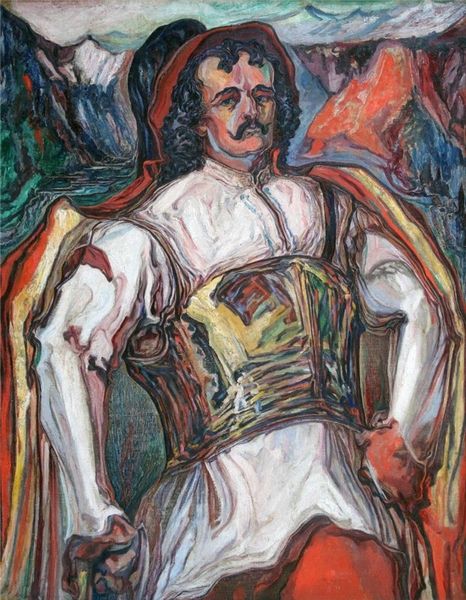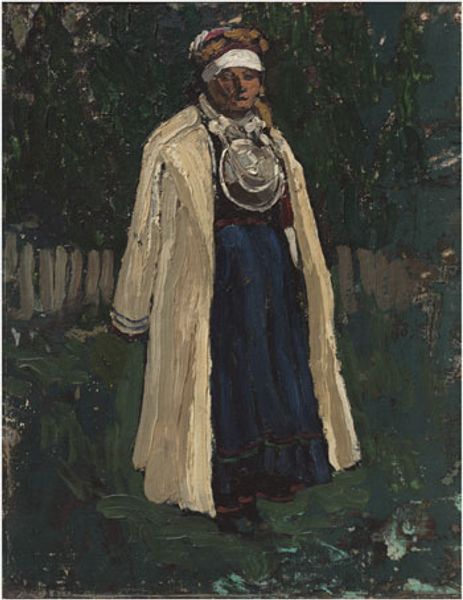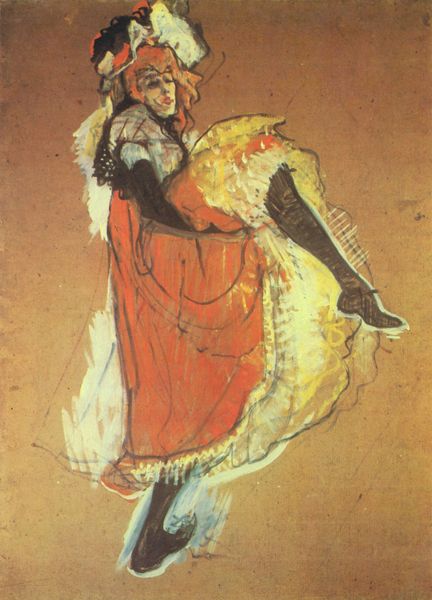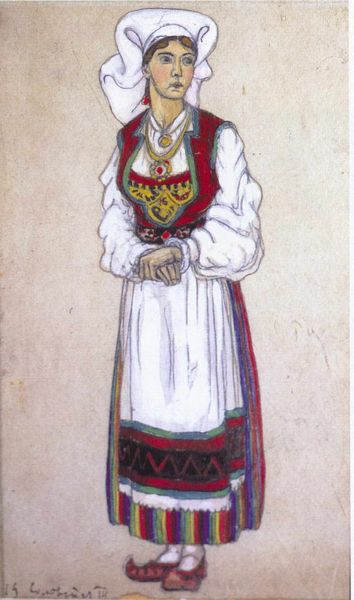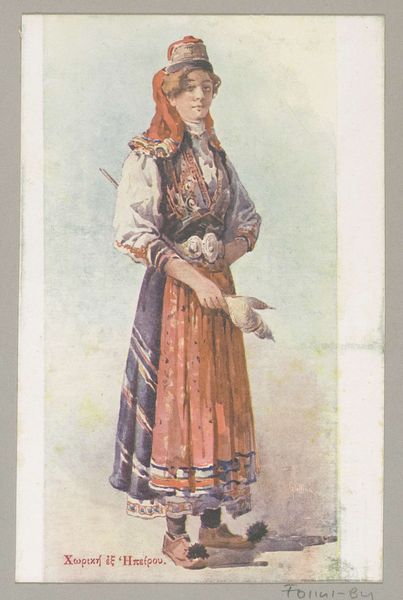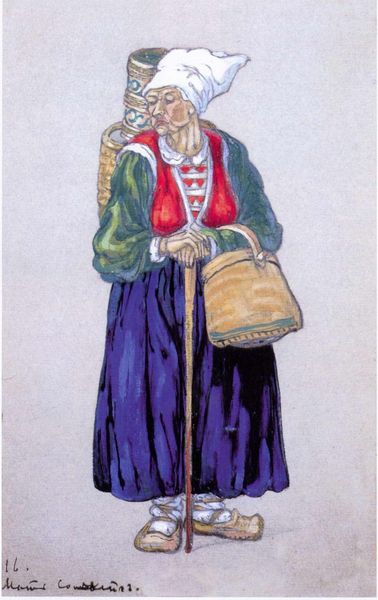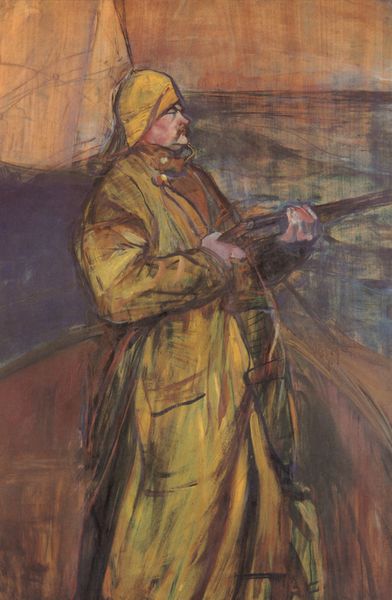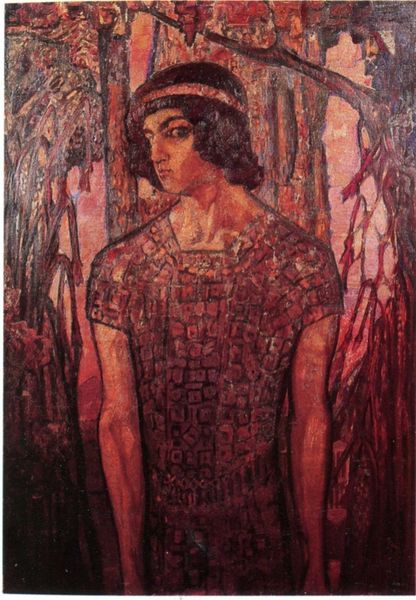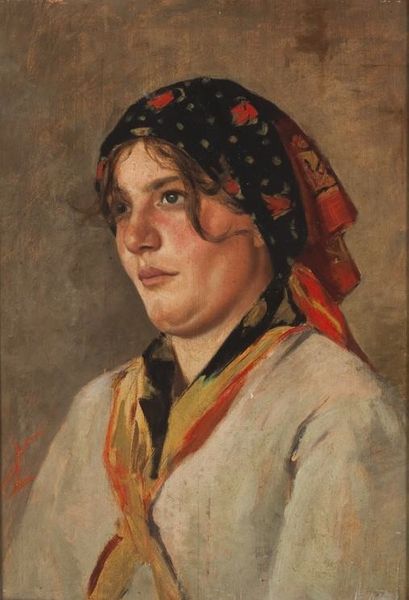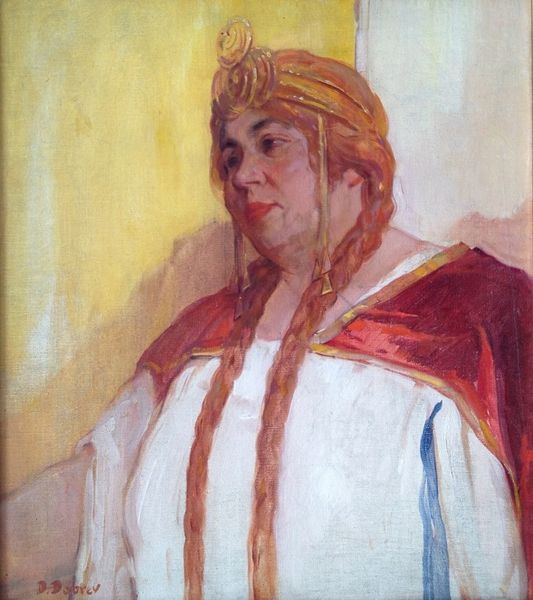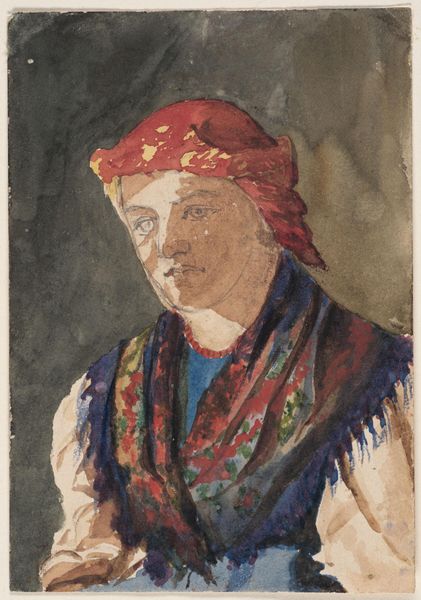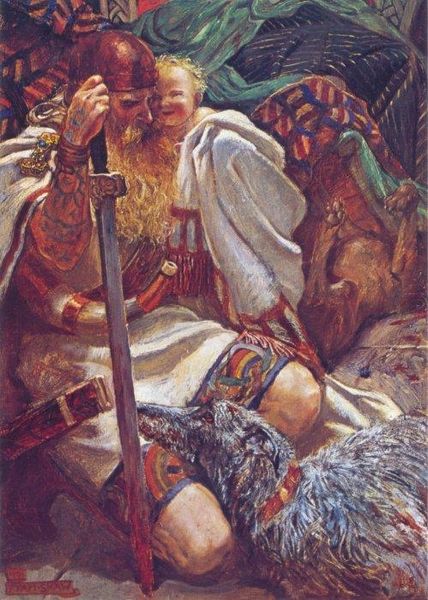
Copyright: Public domain
Curator: I'm immediately struck by the rich earthy tones, almost autumnal, and the serenity radiating from her expression. It feels grounded, yet otherworldly at the same time. Editor: Standing before us is Oleksa Novakivskyi's 1931 portrait, "Dzvinka," created with tempera on canvas. Novakivskyi's influence on Ukrainian art during his lifetime is undeniable, and in the context of interwar portraiture, "Dzvinka" certainly warrants consideration. Curator: Tempera lends such a unique matte texture; look how it absorbs the light! And those brushstrokes are just gorgeous, they're so free! They remind me of the landscapes of early Gauguin! Editor: Indeed, one can trace certain echoes of post-impressionistic trends within it. But I wonder about the way this particular image, made at the cusp of the Stalinist repressions, negotiates the idealization of Ukrainian identity, particularly through representations of women like Dzvinka. Does she symbolize a certain idealized rural past? Curator: Oh, for sure. There is that almost wistful nostalgia there. And she is holding that vessel. What’s in it I wonder? Is it empty or is it something else? Her clothes and landscape certainly do contribute to some rustic visual harmony... Editor: Note, for instance, how Novakivskyi uses vibrant color—we might even say approaching Fauvism, in the rendition of the landscapes and folk costume, a conscious nod to Ukrainian visual traditions perhaps. It raises the question: is this artwork also an engagement with a political message of a rising cultural nationalism within Ukraine at that period? Curator: Politics seeping into paintings again, haha. It always does! Despite that undercurrent of tension you're talking about, I can't help but admire how he balances bold, unconventional strokes with delicate realism. It really humanizes Dzvinka, she seems so alive somehow, and this, combined with the bold colors, almost screams out, it is gorgeous. Editor: Indeed. Novakivskyi seemed to understand that the tension itself could create a powerful, engaging work of art, layering both traditions and realities within one picture frame. Curator: I find myself strangely uplifted by her spirit. Art does tend to create echoes over time doesn't it? Editor: Precisely, a fascinating interplay between subject, symbolism, and sociopolitical context which I think Novakivskyi captured beautifully within his practice and through his school.
Comments
No comments
Be the first to comment and join the conversation on the ultimate creative platform.
